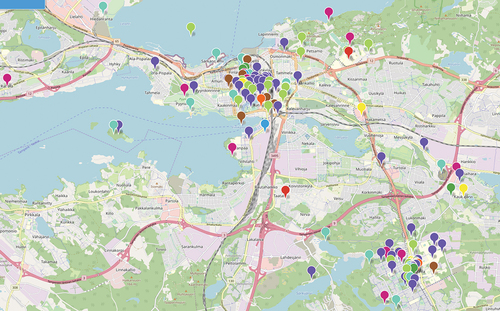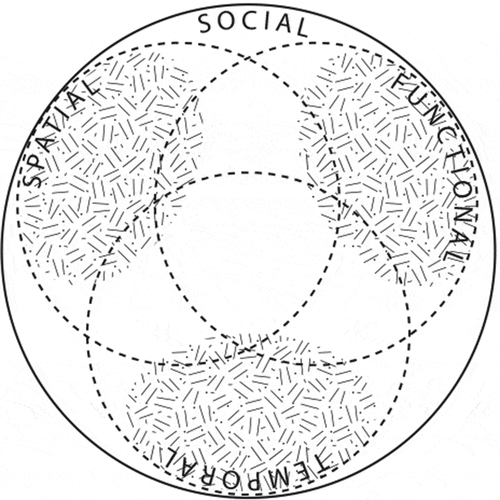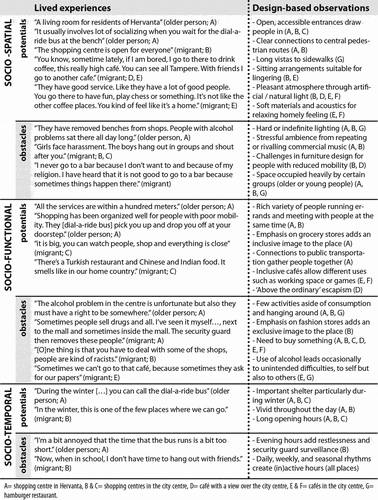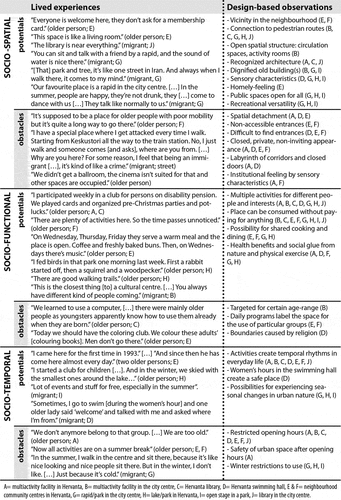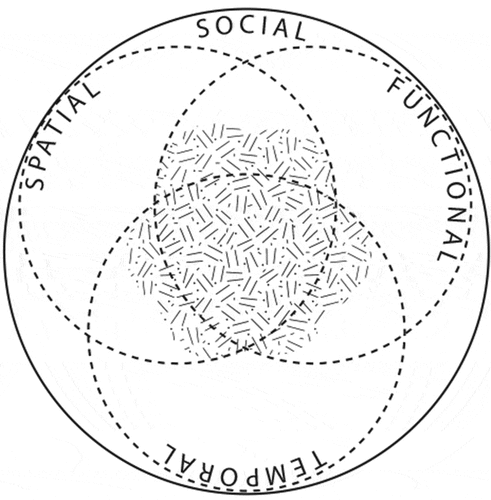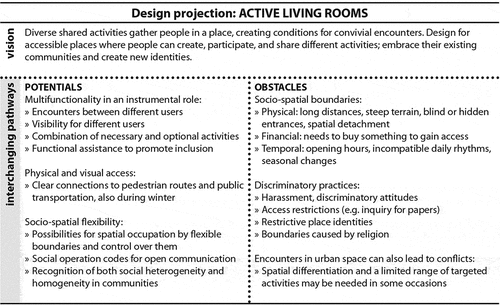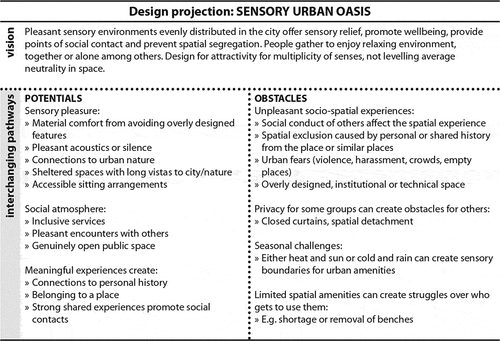Figures & data
Figure 4. Observation photographs from commercial gathering places. Seating arrangements offer socio-functional possibilities for resting, meeting acquaintances, watching other people, playing, and working. Socio-spatial factors such as type and arrangement of seating, as well ass socio-temporal factors such as daily rhythms affect these potentials.Footnote3
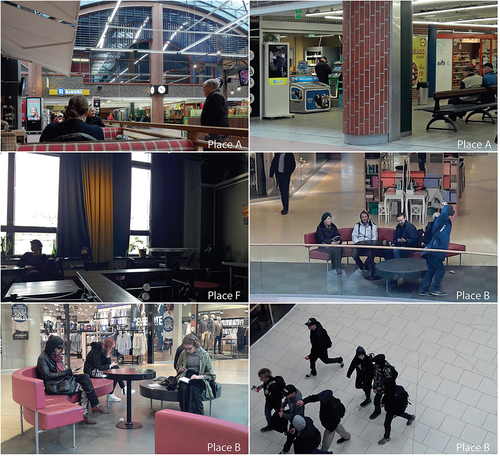
Figure 6. Observation photographs from public activity facilities. Socio-spatial potentials are supported, inter alia, by sensory characteristics of nature, dignified old buildings, openings connecting facilities to open public space, and open internal spatial structure. Socio-spatial obstacles in turn are caused by deficiencies in accessibility, non-inviting appearances, and rigid boundaries between activity facilities and public space.


